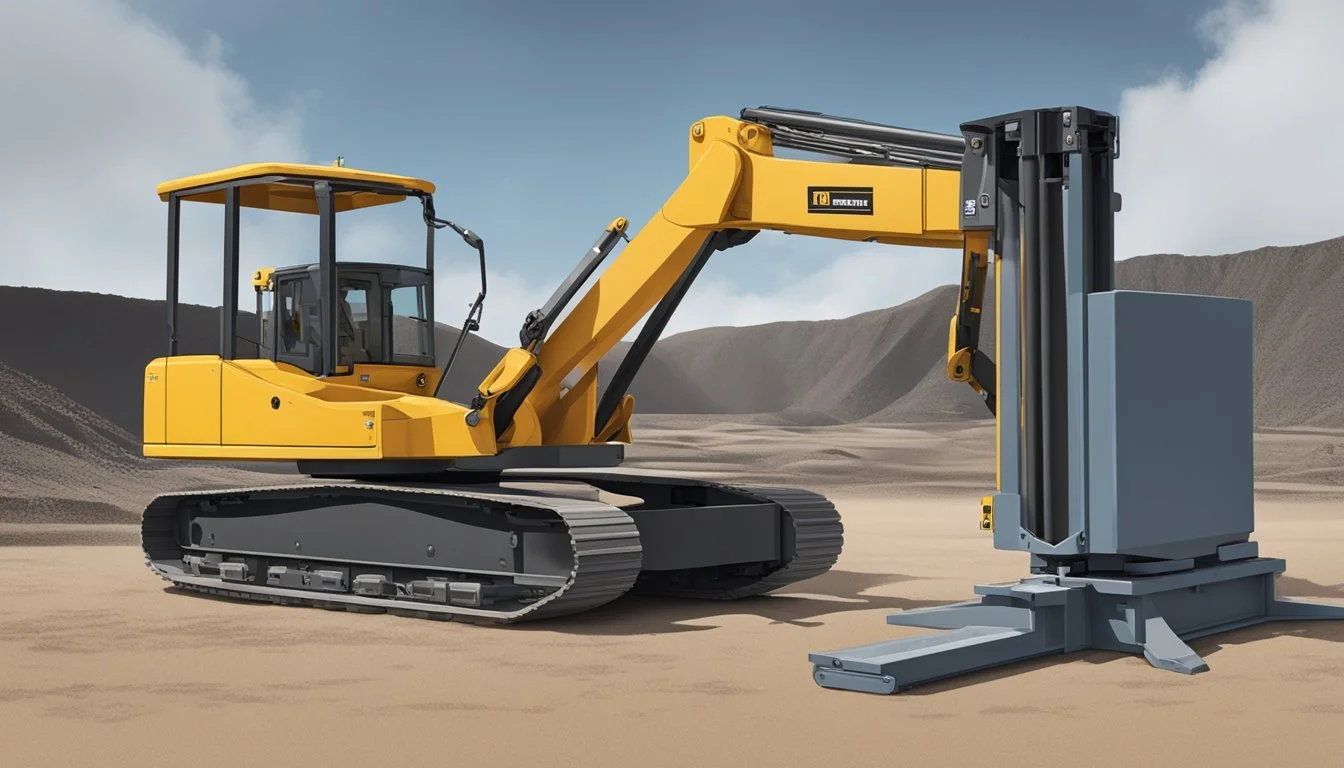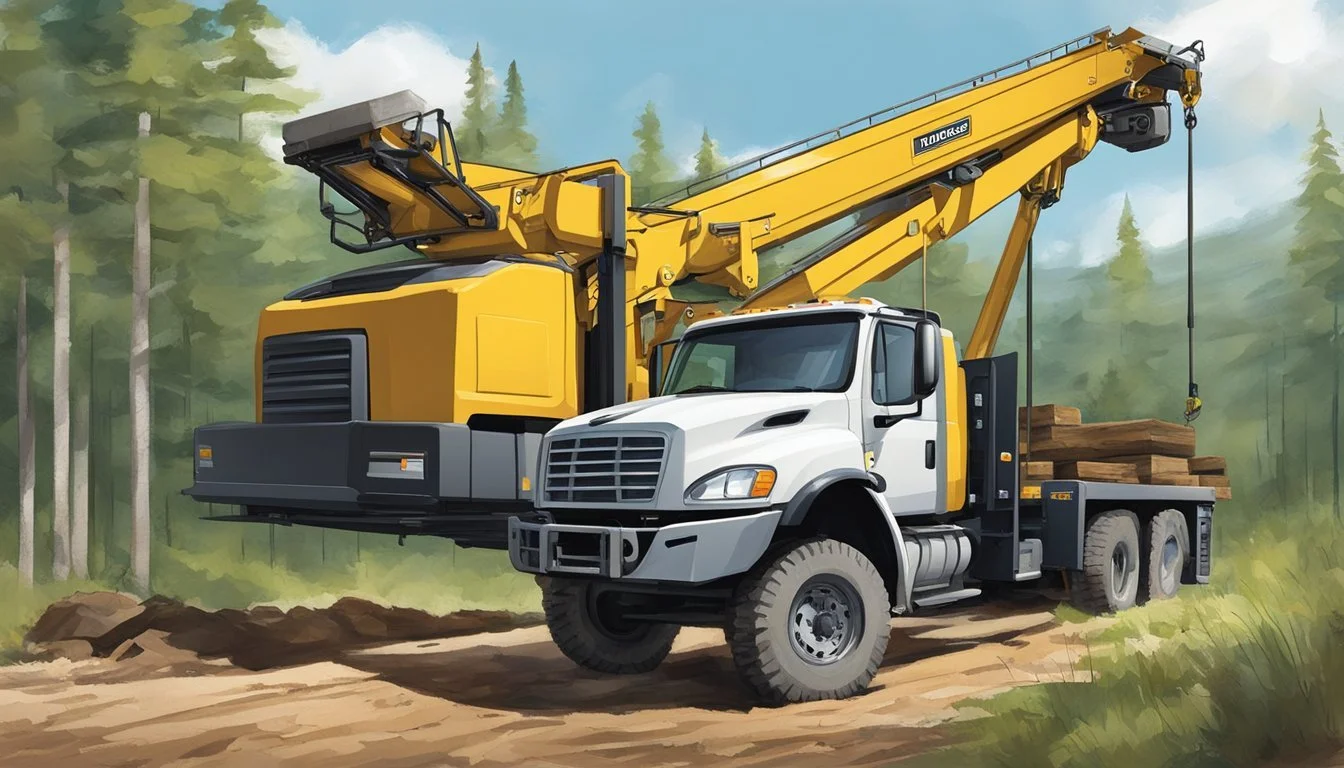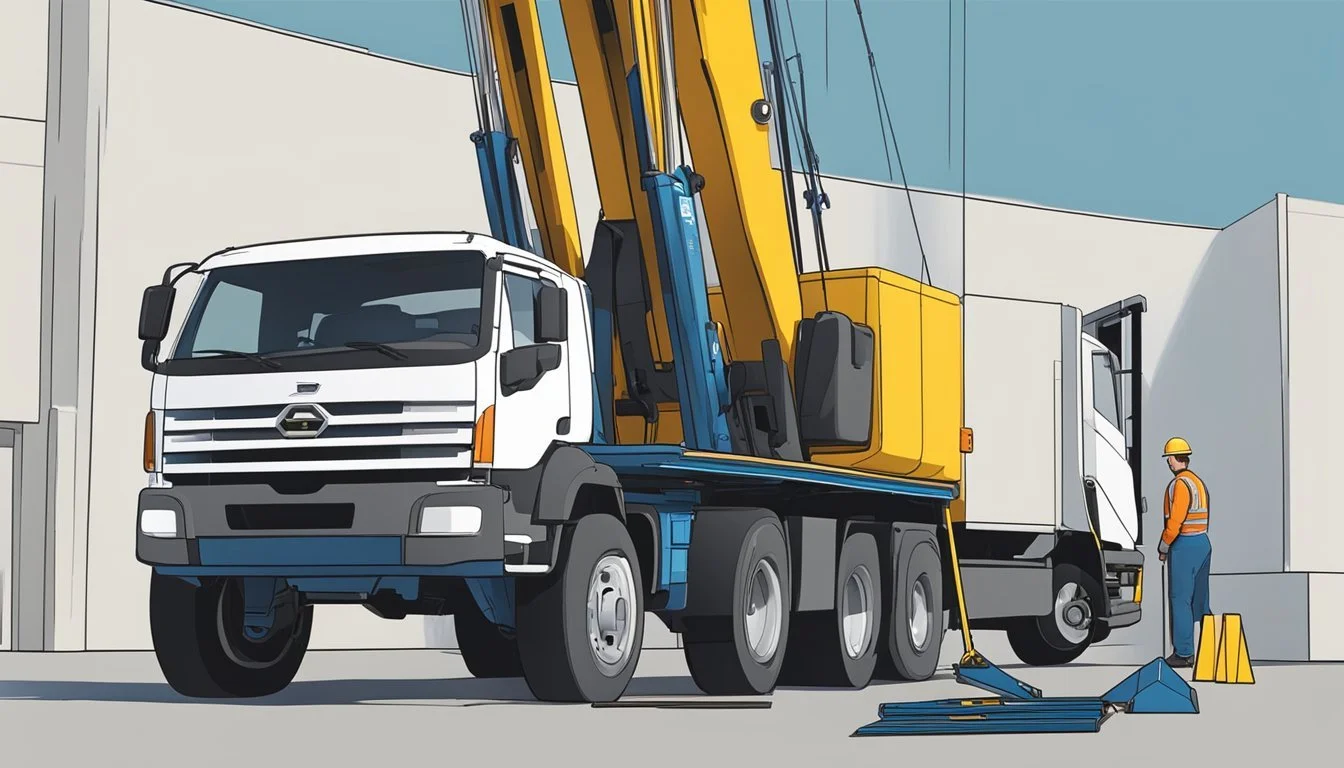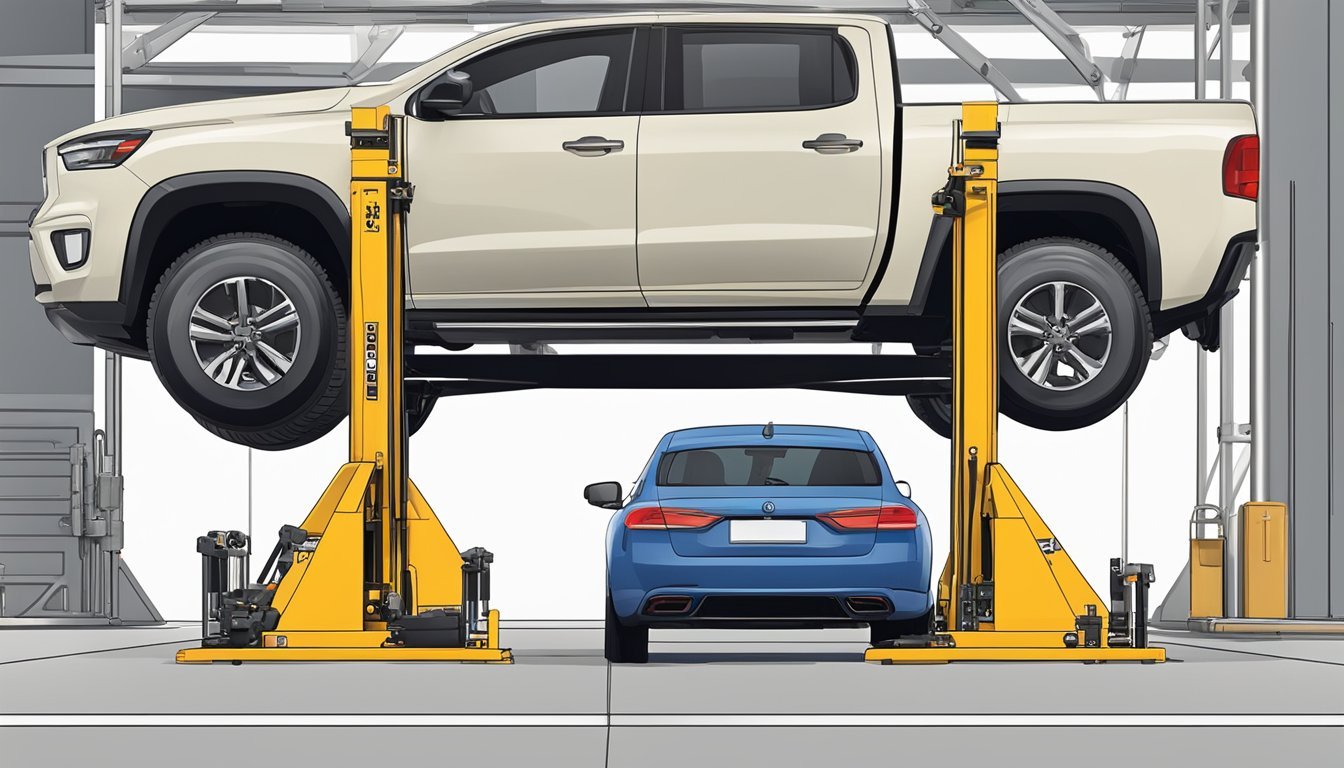The Ultimate Guide to Using a High-Lift Jack
Mastering Heavy Equipment and Vehicle Lifting on Your Homestead
High-lift jacks are a quintessential tool for homesteaders who often find themselves needing to lift heavy equipment or vehicles for maintenance and repair tasks. This type of jack, known for its ability to lift loads significantly higher than standard jacks, is highly versatile. Homesteaders appreciate the mechanical leverage and operational simplicity it provides when working on various projects, from repairing a tractor to adjusting farming implements.
Understanding the correct usage of a high-lift jack is paramount to ensure safety and efficiency. The jack has a set of distinct features, such as a reversing latch and a climbing pin, which allow for precise control during the lifting process. These features, coupled with the robust construction of the jack, make it ideal for a wide range of lifting tasks in an outdoor, rugged environment typical of a homestead.
Safety is a critical aspect when utilizing a high-lift jack due to the potential risks associated with lifting heavy loads. Users must be familiar with the equipment's components, employ personal protective equipment, and follow safety guidelines meticulously. Regular inspection and maintenance of the jack are necessary to ensure reliability and to prevent accidents. By adhering to best practices and understanding the capabilities of a high-lift jack, homesteaders can confidently manage their heavy-lifting needs with precision and control.
Fundamentals of High-Lift Jacks
High-Lift Jacks are versatile tools for lifting heavy equipment and vehicles, crucial in homesteading for various tasks, from changing tires to winching operations. Understanding the proper components and operation of these jacks ensures safe and efficient use.
Understanding the High-Lift Jack
A high-lift jack is a mechanically operated device designed to lift heavy equipment and vehicles. It is characterized by a vertical steel bar equipped with a climbing pin and a runner that slides along the bar. The lifting mechanism is activated by a handle which, when pumped, moves the runner—and thus the load—upward. The runner is secured in place by the pin, which interacts with the notches along the bar.
Lifting: Engaging the reversing latch, the user sets the direction that determines whether the jack is in lifting or lowering mode. To lift, the handle is pumped, causing the runner to ascend, each movement secured by the climbing pin.
Lowering: To lower a load, the reversing latch is shifted to the down position. The handle then controls the gradual descent of the runner down the steel bar.
Key Components and Terminology
Breaking down the high-lift jack's key components will aid in understanding its operation.
Handle: Used to manually drive the lifting and lowering mechanism.
Base: Provides stability to the jack; it is the foundation that supports the weight during lifting.
Climbing Pin: Moves within the steel bar's holes, enabling the runner to ascend or descend.
Runner: The part of the jack that slides up and down the steel bar and directly contacts the load.
Reversing Latch: A switch-like mechanism that changes the jack's function from lifting to lowering.
By knowing each component's role and how they work together, users can operate high-lift jacks confidently and safely.
Choosing the Right High-Lift Jack
Selecting the appropriate high-lift jack for homesteading equipment and vehicle lifting requires attention to jack types and specifications. One must consider the weight the jack can handle and the physical size of the jack to ensure safe and effective operation.
Types of High-Lift Jacks
High-lift jacks come in various designs tailored to specific lifting needs. The Cast/Steel Hi-Lift is an entry-level model suitable for occasional use, constructed from a combination of cast iron and high-strength stamped steel. Another model to consider is the Hi-Lift XT485 X-Treme Jack, known for its durability, integrating more rugged materials and features suitable for frequent and intense applications.
Cast/Steel Hi-Lift:
Material: Cast iron and stamped steel
Intended Usage: Occasional, light-duty
Hi-Lift XT485 X-Treme:
Material: Heavy-duty components
Intended Usage: Frequent, heavy-duty
Assessing Weight and Size Requirements
Before selecting a high-lift jack, one should assess the weight capacity needed to ensure it can safely lift the equipment or vehicles in question. High-lift jacks generally have a weight capacity up to 7,000 lbs, which typically exceeds the capabilities of standard bottle jacks. For instance, the Hi-Lift XT485 X-Treme Jack is well-regarded for its capacity to handle heavy loads with confidence.
The size of the jack is also a critical factor. High-lift jacks are available in different heights, such as 36-inch and 48-inch models. Larger sizes offer higher lift points, which can be crucial for lifted or larger vehicles and equipment commonly encountered in homesteading.
Cast/Steel Hi-Lift:
Weight Capacity: Up to 7,000 lbs
Size Options: 36", 48", etc.
Hi-Lift XT485 X-Treme:
Weight Capacity: Up to 7,000 lbs
Size Options: Typically 48"
By considering the types of high-lift jacks available and carefully assessing the weight and size requirements, individuals can choose the right jack to meet their homesteading needs, ensuring both safety and efficiency.
Operation and Handling
High-lift jacks are indispensable tools for lifting heavy equipment and vehicles, especially in homesteading settings. Mastery of setup, precise lifting and lowering methods, and awareness of safety protocols are essential for effective use.
Setting up the High-Lift Jack
To ensure that the high-lift jack functions correctly, the user must set it up on a stable and level base. Placing a broad and flat support under the base can prevent sinking on soft ground. Before use, one should verify that all components, including the climbing pins and the base, are secure and undamaged. Always remember to chock the wheels of the equipment or vehicle before commencing with lifting to prevent any unintended movement.
Safe Lifting and Lowering Techniques
When lifting, the handle of the high-lift jack must be operated with caution. The user should place the lifting nose under the load at the manufacturer-recommended lifting point. Using a consistent motion, lift the handle to engage the climbing pins into the holes of the steel bar; each full cycle moves the lifting mechanism securely up one notch. For lowering, reversing the lever locks the mechanism in the down position. The user must keep a firm grip on the handle, as releasing it rapidly could cause uncontrolled descent, posing a safety hazard.
Navigating Potential Hazards
Awareness of potential dangers is crucial when using a high-lift jack. The equipment must never be used on curved or tubular surfaces, as the instability can lead to the vehicle slipping off the jack. Always monitor the lift to prevent over-extension of the jack, which may become unstable if the load is raised beyond its safe lifting capacity. Regular maintenance checks are also critical, ensuring that the lever, pins, and other mechanical parts are in good working order to avoid equipment failure during operation.
Advanced Usage Scenarios
In homesteading, the high-lift jack stands out for its versatility and utility in scenarios beyond lifting. It is routinely employed for winching and as a manual spread or clamp, extending its usefulness in managing heavy equipment and vehicles.
High-Lift Jack for Winching
A high-lift jack can serve as a manual winch in the absence of a powered one. For winching, a sturdy chain or tow strap is attached to the winch point on the vehicle or equipment needing to be moved. The following steps delineate its operation:
Secure the chain or tow strap to the object needing to be pulled.
Attach the other end to a solid anchor point.
Engage the high-lift jack's winching function by inserting the handle and operating it according to the specified mechanics, thereby initiating the pulling action.
Note: This method requires caution and regular inspection of the setup to ensure safety throughout the pulling process.
High-Lift Jack as a Spread or Clamp
Support and clamping tasks are also within the purview of a high-lift jack on a homestead. The jack's configuration allows it to push apart or squeeze together objects when necessary. When used as a spread or clamp, the procedure is as follows:
For spreading:
Position the high-lift jack's foot between the items to be spread.
Operate carefully to apply outward force.
For clamping:
Place the high-lift jack's mechanism against the objects to be clamped together.
Utilize the ratcheting mechanism to exert pressure, effectively securing them in place.
Attachments and specialized accessories can enhance the clamping and spreading capabilities, making the high-lift jack an indispensable tool for a wide range of tasks on the homestead.
Accessories and Attachments
Maximizing the utility of a high-lift jack depends on the correct usage of various accessories and attachments that enhance its functionality for lifting heavy equipment and vehicles. By employing essential accessories for stability and custom attachments for specific tasks, users can achieve safe and effective lifting arrays suitable for diverse applications in homesteading.
Essential High-Lift Jack Accessories
To ensure safe and optimized use of a high-lift jack, certain accessories are critical:
Off-Road Base: An off-road base or base plate provides stability on soft ground, distributing the weight and preventing the jack from sinking.
Jack Stand: A reliable jack stand is crucial for maintaining the load at a certain height safely after lifting.
A well-assembled kit might include:
Lift-Mate: Allows the high-lift jack to lift from the wheel, useful for vehicles without bumpers.
Top Clamp-Clevis: Facilitates clamping and spreading operations for repair tasks.
Chain: Used along with the top clamp-clevis to grip and apply tension where needed.
Customizing Your Jack for Specific Tasks
Specialized tasks require tailored accessories, enhancing a high-lift jack's versatility:
Bumpers and Rock Sliders: When equipped with a top clamp-clevis, a high-lift jack can lift vehicles directly from aftermarket bumpers or rock sliders designed with jack points.
Axles and Tires: Lifting directly from the axle or for changing a tire can be accomplished with the top clamp-clevis attachment that can grip these parts securely.
A quick selection guide for customizing might look like:
Base Plate: Heavy Equipment - Essential, Vehicle Lifting - Essential, Homesteading Tasks - Useful
Jack Stands: Heavy Equipment - Recommended, Vehicle Lifting - Recommended, Homesteading Tasks - If needed
Strap: Heavy Equipment - For Securing, Vehicle Lifting - For Control, Homesteading Tasks - For Moving Logs
Utilizing the right accessories and attachments ensures the high-lift jack remains an indispensable tool for efficient and safe lifting in a homesteading environment.
Maintenance and Care
Maintaining a high-lift jack is essential for ensuring its longevity and reliability. Proper care involves regular inspections and addressing common issues such as rust and dirt accumulation. By following these maintenance protocols, users can keep their high-lift jacks in top condition and ready for any lifting task.
Regular Inspection and Care
They should conduct a thorough inspection of the high-lift jack before and after each use. Users must check for any signs of wear, damaged components, or loose parts. Key areas to inspect include:
Handle and lifting mechanism: Ensure smooth operation and absence of bends or cracks.
Pins and springs: Verify that they are intact and in good working order.
Specific maintenance tasks include:
Cleaning debris: Remove any dirt or grime from the moving parts.
Lubrication: Regularly lubricate the moving parts with a high-quality lubricant to ensure smooth operation.
Storage: Store the high-lift jack in a dry, covered location to prevent rust and protect its components.
Addressing Rust and Dirt
Rust and dirt not only compromise the jack's performance but also its overall durability. Users should:
Clean rust-prone areas: Wipe down any metal parts prone to rusting, especially after exposure to moisture or mud.
Remove rust: For existing rust, use a wire brush or sandpaper to clean the surface, and then apply a rust inhibitor to prevent future corrosion.
Dirt removal: After usage in dirty conditions, they should clean the jack thoroughly to remove dirt, particularly from the jack's foot and the mechanism that engages the lift.
By adhering to the above maintenance protocols, users can ensure that their high-lift jacks continue to operate effectively and safely in a homesteading environment.
Safety Protocols and Precautions
To mitigate hazards and ensure safety while using a high-lift jack, adhere strictly to the following safety checks and active safety measures, followed by secure post-use storage processes.
Before You Lift: Safety Checks
One must always conduct a comprehensive check to identify potential risks and ensure equipment functionality. Below are the key safety checks:
Assessment: Thoroughly inspect the high-lift jack for any signs of wear, damage, or defects before every use.
Environment: Confirm that the lifting area is firm and level to prevent instability during the lifting process.
Equipment Preparation:
Engage the parking brake on the vehicle/equipment.
Place wheel chocks on the opposite side to the lifting area if necessary to prevent undesired movement.
During Lifting: Active Safety Measures
Once the lifting begins, constant vigilance and adherence to active safety measures are imperative:
Stabilize: Ensure the base of the jack is stable and secure at all times as you raise the equipment.
Positioning: Stand clear of the load's direct path and ensure others do as well.
Proper Operation: Operate the jack's mechanism using smooth, controlled motions to avoid jerking the load.
Personal Protection: Wear appropriate safety gear like gloves, and steel-toed boots to minimize the risk of injuries.
After Use: Ensuring Secure Storage
Proper storage of the high-lift jack is as crucial as its operation:
Lowering the Load: Do so slowly and ensure the area is clear of personnel and obstructions.
Cleaning: Wipe down the jack to remove dirt and debris, which could compromise its functionality.
Storage Area: Store the high-lift jack in a dry, secure location to prevent unauthorized use and protect it from the elements.
Applications in Homesteading
High-lift jacks serve vital roles on a homestead for manipulating heavy equipment and aiding in vehicle recovery. Their mechanical advantage is essential for tasks that require lifting, pulling, or pushing heavy loads.
Using High-Lift Jacks with Heavy Equipment
For dealing with heavy farm equipment such as tractors or plows, high-lift jacks, particularly those designed by Bloomfield Manufacturing, are indispensable. Farmers commonly use these jacks when needing to:
Change tires on four-wheelers or tractors.
Lift equipment for repair or maintenance.
Reposition equipment to attach to vehicles for transport.
They must ensure that the equipment has a stable base and that they've properly engaged safety latches on the jack. Bumpers and recovery points should be checked for stability and strength before attaching the jack.
High-Lift Jacks in Vehicle Recovery
Whether rescuing a jeep stuck in the mud or pulling an off-road vehicle out of snow, high-lift jacks are crucial. In these instances, the jack can function as a manual winch or a lever to free stuck vehicles by following these steps:
Securely attach the jack to the vehicle's recovery points.
Lift or push the vehicle sufficiently to alter its position or to place traction aids underneath.
These uses demonstrate a high-lift jack's versatility in various circumstances encountered in homesteading, ranging from routine maintenance to emergency recovery operations. Proper usage guidelines and safety procedures should be followed to prevent accidents and ensure efficient operations.
Choosing the Proper Lifting Points
When employing a high-lift jack, identifying secure attachment points on the vehicle or equipment is critical. It ensures safety and efficiency during the lifting process. This section helps in deciphering viable lifting points and utilizing the right accessories for an optimal lift.
Vehicle Frame and Bumper Considerations
The vehicle frame offers the strength required for lifting heavy loads, and careful selection of points is paramount. Frame integrity must be assessed before attachment; any signs of rust or damage may compromise the lift. Additionally, the bumper may serve as a lifting point if it is structurally sound and securely fixed to the frame. However, one must ensure that the bumper is designed to bear the load to avoid any deformation.
For vehicles without a suitable bumper or frame point, lift-mates are useful for attaching the high-lift jack directly to the wheel, allowing for safe lifting of the vehicle by the tire. It is essential to avoid lifting from axles or suspension components unless they are specifically designed for this purpose.
Optimizing the Use of Lifting Accessories
Certain accessories can optimize the lifting process. Rock sliders, when properly installed and rated for lifting, can act as solid points along the vehicle's length. They enable the lifting of the vehicle at various points without over-stressing any single area, especially for off-road vehicles with irregular undercarriages.
When selecting lifting points, one must choose locations that evenly distribute the weight of the object being lifted. The use of adapters may be necessary to ensure a secure grip and to avoid slipping. For example, broader pads or suitable-sized adapters for a specific vehicle's lift points can prevent slippage and potential damage during lifting. Always adhere to the equipment's working load limit to maintain safety.
Conclusion
During homesteading activities, the high-lift jack stands out as an indispensable tool for heavy equipment and vehicle lifting. This guide provided a wealth of information to ensure safe and effective application.
Summarizing High-Lift Jack Usages
Lifting: A high-lift jack can be utilized to lift heavy machinery or vehicles, facilitating repairs or tire changes.
Winching: It can act as a manual winch to extricate vehicles stuck in mud or other challenging terrains.
Spreading: Certain high-lift models have capabilities to serve as a spreader in rescuing operations or when adjusting machinery parts.
The key takeaways stress the importance of adhering to safety guidelines, proper use, and regular maintenance checks to ensure the longevity and reliability of the high-lift jack for the user's homesteading needs.






